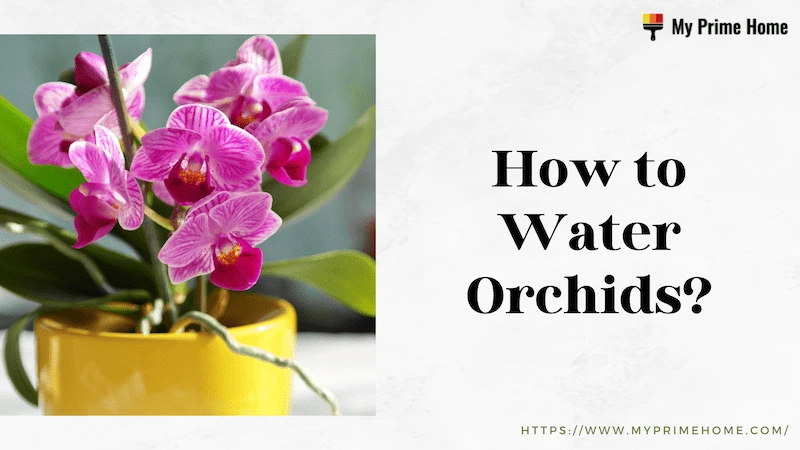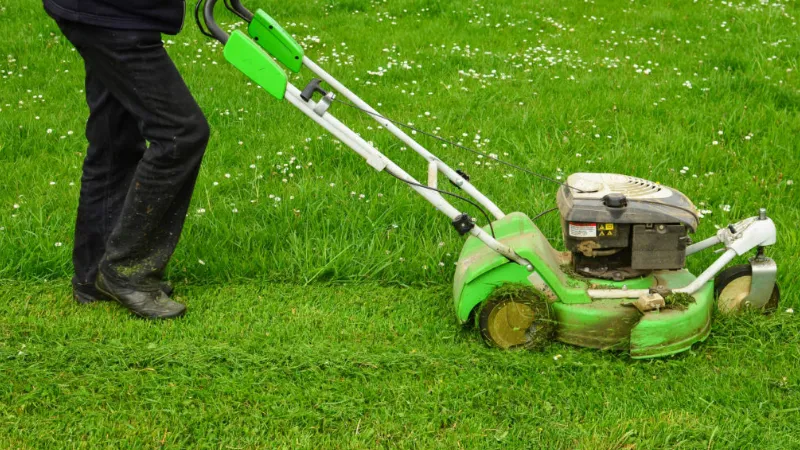Are you looking for a little advice on how to your orchids properly? These picky plants can be challenging to grow either indoors or outdoors. My Prime Home walks you through every crucial step of correctly watering your orchids in this article.
You are supposed to feed orchids rainwater, mist them daily, and plunge them into water. Read on for more detailed information.
Understand Orchid Roots
A membrane called the velamen surrounds the roots of orchids and is as thin as tissue paper. This multi-purpose membrane soaks up large amounts of water quickly, adheres to rough surfaces, and promotes the exchange of minerals and salts. Like an expensive water meter, orchid velamen is an excellent indicator of your plant’s water needs. In contrast to freshly watered velamen, which can vary in color depending on the species, dry velamen are typically white or silvery.
The best way to ensure proper watering is to learn how to read your orchid’s roots. Since most orchids would rather be slightly underwatered than overwatered, err on the side of caution. The plant will deteriorate if orchid roots are kept constantly wet.
Pine bark nuggets will retain moisture longer than charcoal or clay pellets, for instance, while different potting media retain varying amounts of moisture. Less watering is required as the water retention increases. The top or bottom of the orchid can be watered. Mounted plants will need more water than unmounted plants. The ingredients in typical orchid mixes are fir bark, tree fern fiber, sphagnum moss, perlite, and gravel.
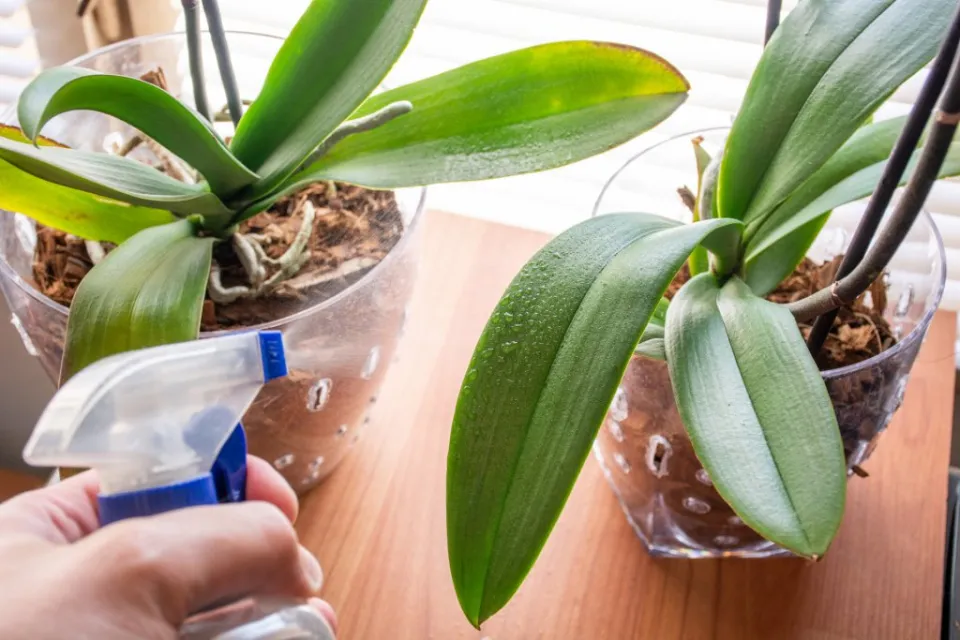
How to Water Orchids?
Not so long ago, only specialized nurseries grew orchids, which were then primarily sold to collectors who would show off their exotic blooms to anyone they wished to impress. All of this changed with the development of micropropagation techniques, which allowed for the mass production of some orchid species at low cost. But if there is one element of orchid care that you need to perfect, it is how to water orchids correctly. If you find your orchid wilting, it could be due to incorrect watering.
Feed Them Rainwater
Despite the fact that orchids are adaptable, it is preferable to use rainwater to water them if you live in a region where the tap water is hard. The best water to use is lukewarm. The roots won’t survive if you leave them submerged in water for an extended period of time. Generally speaking, an orchid is healthy if the leaves are green. In particular, if they were slightly wrinkled, they could use a drink if they were silver or white. If they’re brown, this could be caused by overwatering. Next time, water more sparingly and trim off any damaged areas.
Mist Daily
Daily misting, not watering, is essential. Aim to water your orchid once a week. In very hot weather, switch this up to every two or three days. Water no more frequently than once every two to three weeks during the winter. When watering, dunk the whole pot into a sink or bowl of water and leave it submerged for a few minutes to allow the roots to absorb all the water they need. Alternately, you can run the pot under the water for about 20 seconds, letting the water drain out of the bottom.
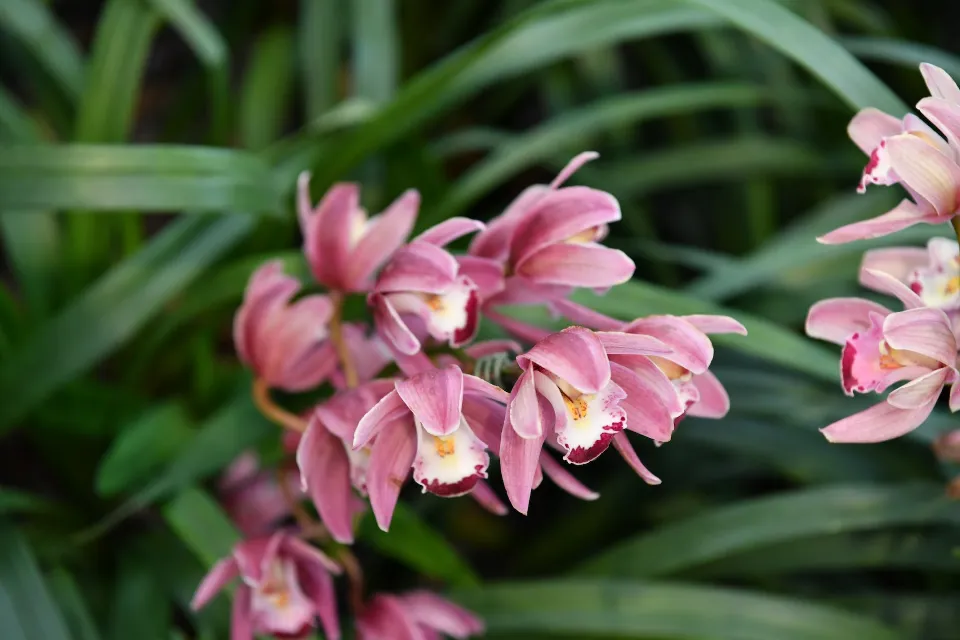
Plunge in Water
The best way to water an orchid is not to simply pour water on top of the pot, but rather to submerge it in water once a week. Lift the pot up after that and allow any extra water to drain out of it through the holes in the bottom of the pot. Put it on a gravel saucer after it has thoroughly dried out. This will ensure that any excess water drains away and help the air circulate around it.
Although getting water on the leaves won’t necessarily harm the plant, I find that when I keep the leaves dry, I have fewer issues with crown rot and leaf diseases.
Top watering tips:
Common Mistakes
You must know that orchids are tropical plants. So they like lots of water, right? Sort of, is the answer. Tropical plants, though they are tropical plants that live in trees, are the home of many well-known orchids. They may experience drenching rains that last for hours or even days in their natural habitat, but many species have evolved to survive dry spells where only light precipitation may fall for several weeks.
You are very unlikely to replicate the canopy environment of a tropical forest in your home when growing orchids, even with the ideal airflow, humidity, and light levels. So, keeping this in mind, here are the most common mistakes people make when watering orchids:1
- Watering too often:There should never be any still water around orchid plants. Frequently, between waterings, the plant should have completely dried out.
- Watering at night:Always water in the morning, regardless of the type of orchid you are growing. Always. Nighttime watering allows water to stagnate in the growing tips of phalaenopsis orchids or the flower sheaths of Cattleyas. This encourages bacterial and fungal diseases. In the evening, the orchid plants should be dry.
- Ignoring the plant’s cues:The needs of an orchid are usually fairly obvious. Pseudobulbs should be large and rounded during the growing season, and thick, fleshy leaves should be able to hold themselves off the potting medium. Winter months may cause some deciduous orchids to shrivel. Know what you are growing, and this is okay.
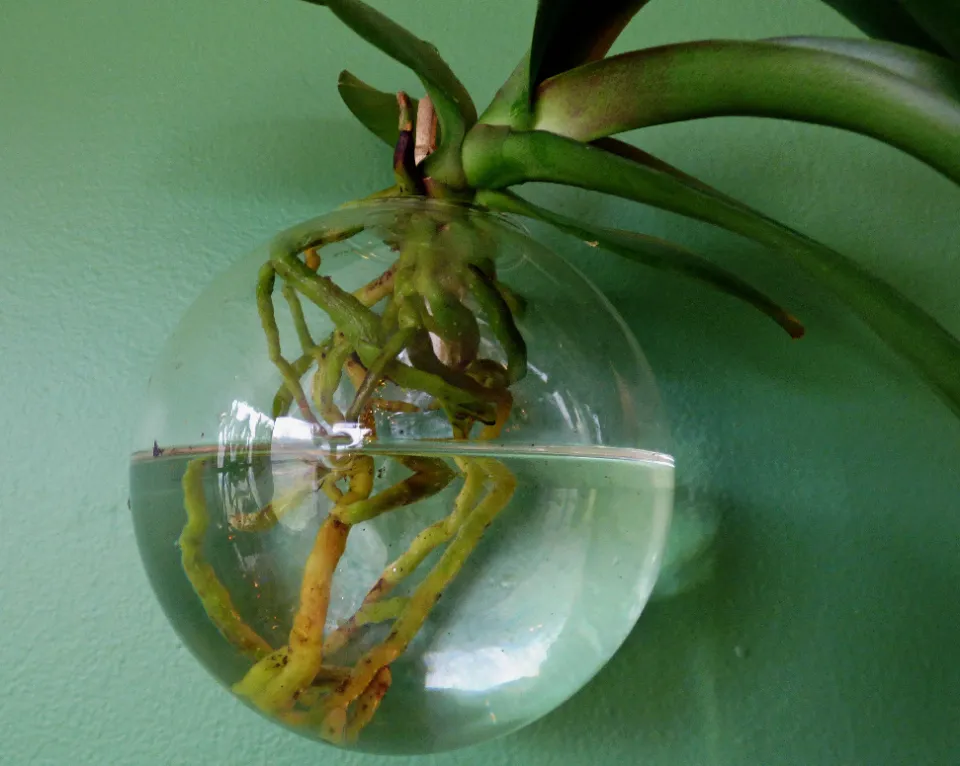
Factors That Affect Watering
If only there was a simple manual or a water fairy that sat on top of your plants and gave you precise instructions on when and how much to water them. There isn’t, which is unfortunate. But that is one of the satisfying reasons people grow orchids. It’s all about balance and instinct—and plenty of patience. Here are some of the factors you need to consider when developing a watering schedule:
- Species:Make sure you are knowledgeable about the species you are caring for and that you adhere to any specific care instructions.1 Different orchids can have very different watering requirements, and it can be very challenging to have a mixed collection without overwatering or underwatering at least some of your plants. Start out by choosing just one or two of your favorites.
- Temperature:In general, the need for water increases as the temperature rises.
- Humidity:In general, the greater the ambient humidity, the less need there is for watering. The kind of potting media you use has a direct impact on humidity. A tray of pebbles with water in it is frequently used by home gardeners to keep their pots moist.
- Airflow: Don’t be afraid of a little airflow. Orchids like plenty of fresh air, both around the roots (for mounted plants) and leaves. But greater airflow tends to dry them out quicker, so you’ll need to increase watering.
How to Decide When to Water?
Water sparingly. No orchid variety requires daily watering. In fact, excessive watering can result in the decay and eventual death of an orchid’s roots.[1]Orchids should only be watered when they start to dry out, unlike many other houseplants. It mimics an orchid’s natural environment to only water them when they are nearly dry.
- Some orchids have the ability to store water, while others do not. Before watering an orchid that can store water, like a cattleya or an oncidium, you should let it completely dry out. If you have a type of orchid that does not have water-storing organs, such as phalaenopsis or paphiopedilums, you should water the orchid before it is entirely dry.
- If you’re not sure what type of orchid you have, plan to water the orchid when it is almost dry, but still has just a bit of moisture left.
Think about the surroundings. The humidity in your area, the amount of sun the orchid receives, and the air temperature all have an impact on how frequently you should water orchids. There is no standard amount of time to water an orchid because these variables differ by household and region. You’ll need to create a routine tailored to your particular environment.
- Your orchid will require less frequent watering when it’s cool inside your house as opposed to when it’s hot.
- The orchid will require more frequent watering if it is placed in a window with direct sunlight as opposed to a more shady area.
Check to see if the potting soil appears dry. It may be necessary to water the orchid now, according to this first clue. Typically made of bark or moss, orchid potting mix should be watered if it appears to be dry and dusty. You can’t tell if it’s time to water by simply looking at the potting mix, though. Lift the pot to check its weight. When it comes time to water the orchid, the pot will feel lighter. If it’s heavy, that means there’s still water in the pot. Over time, you’ll get a sense of how heavy the pot feels when the orchid needs water versus how heavy it feels when it still has moisture inside.
- A pot that still has moisture in it might also appear differently. If your orchid is in a clay pot, it will appear darker when it is still wet. It might need watering if it has a light color.
Do a finger test. This is the most accurate way to tell if an orchid needs more water. With care to avoid disturbing the orchid’s roots, stick your pinky finger into the potting mixture. It’s time to water the orchid if you detect either no moisture at all or very little moisture. Give it more time if the potting soil feels wet right away. You should wait an extra day if you’re unsure.
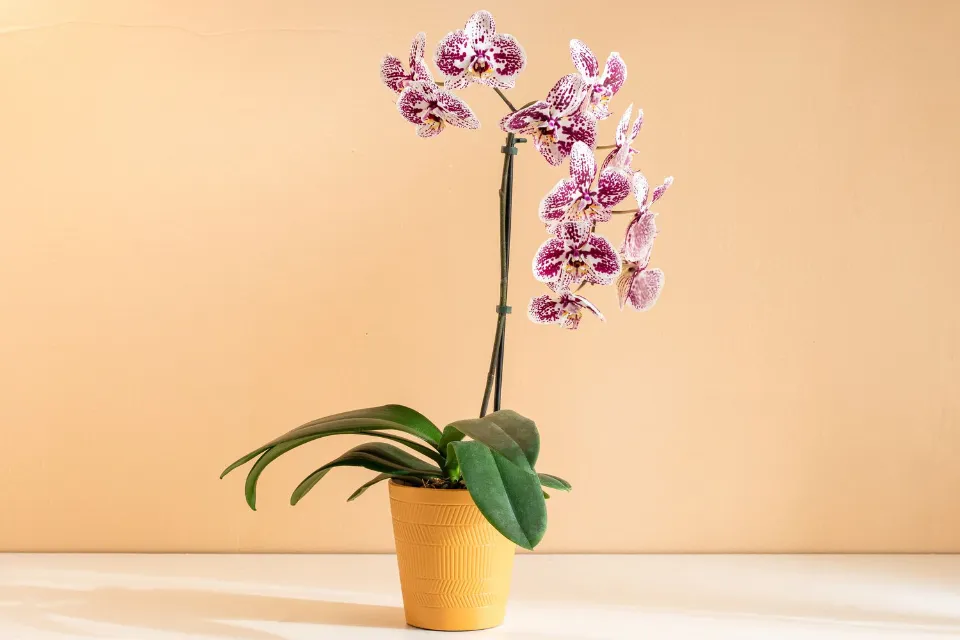
FAQs
How Much Water Does An Orchid Need?
In general, water twice a week when it’s warm and dry and once a week when it’s winter. The size of your orchid container also helps determine how often you need to water, regardless of climate conditions. A 6-inch pot typically needs water once every seven days, and a 4-inch pot once every five to six days.
Do You Water Orchids from the Top Or Bottom?
To master watering orchids, it is essential to water from above with fresh, pure water. If the potting mixture is getting close to being dry, water pseudobulbs and other orchids with water storage.
Do Orchids Like Tap Water?
Regular tap water is fine, as long as it isn’t softened with salts. The best water for orchids is room temperature, but you can water your plant with ice cubes without harming it. Put up to three ice cubes on top of the potting medium once a week, preferably in a spot where they won’t touch the leaves.
Do Orchids Need Direct Sunlight?
These plants thrive in strong light, but direct sunlight can burn orchids. An eastern or southern window with bright, indirect light works best. A healthy, happy plant will have bright green leaves, which are a good indicator of how much light an orchid is receiving.
Summary: How to Water Orchids?
You are supposed to feed orchids rainwater, mist them daily, and plunge them into water.
Orchids are popular as houseplants, and wonderful varieties can be found in nurseries and garden centers. Orchids naturally grow on trees, where their roots are exposed to sunlight, fresh air, and water. To mimic their natural environment, potted orchids need special watering. When their soil is nearly dry, water orchids only lightly.
Read about
